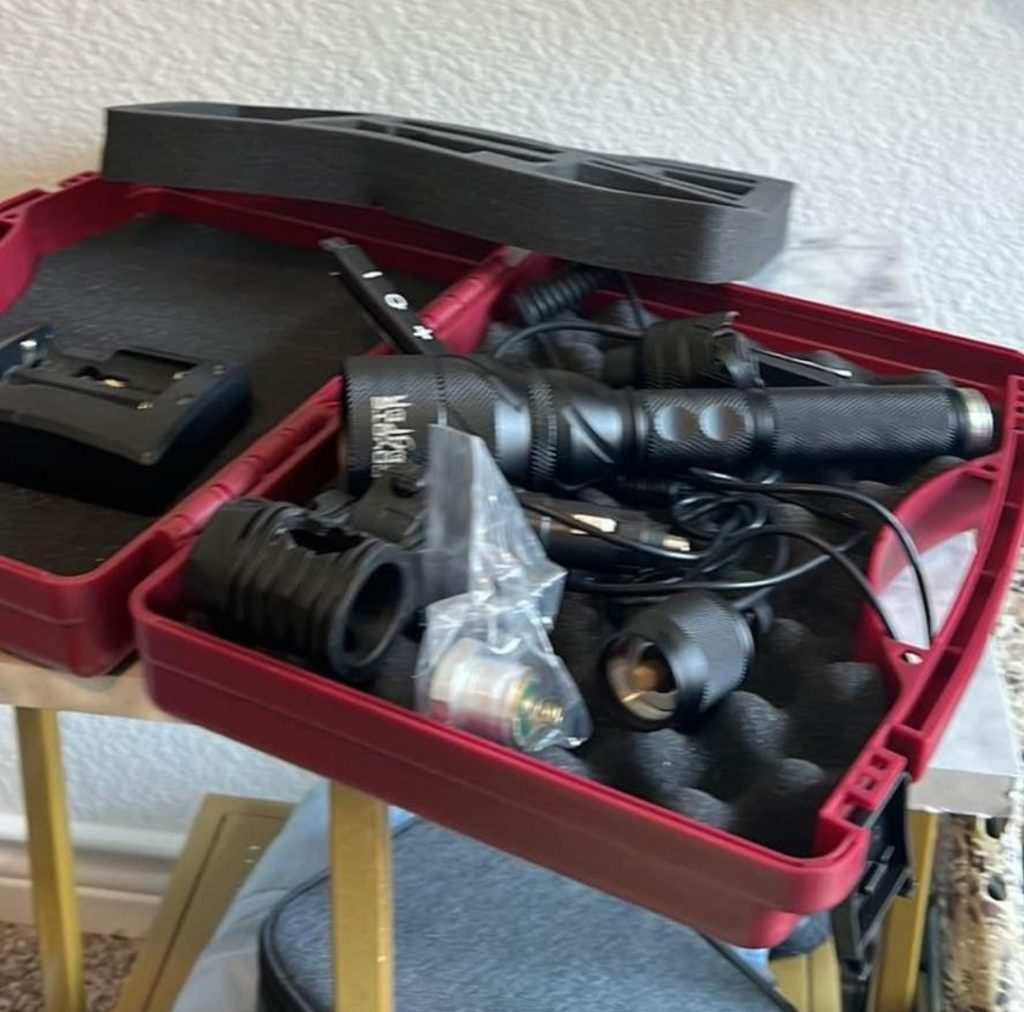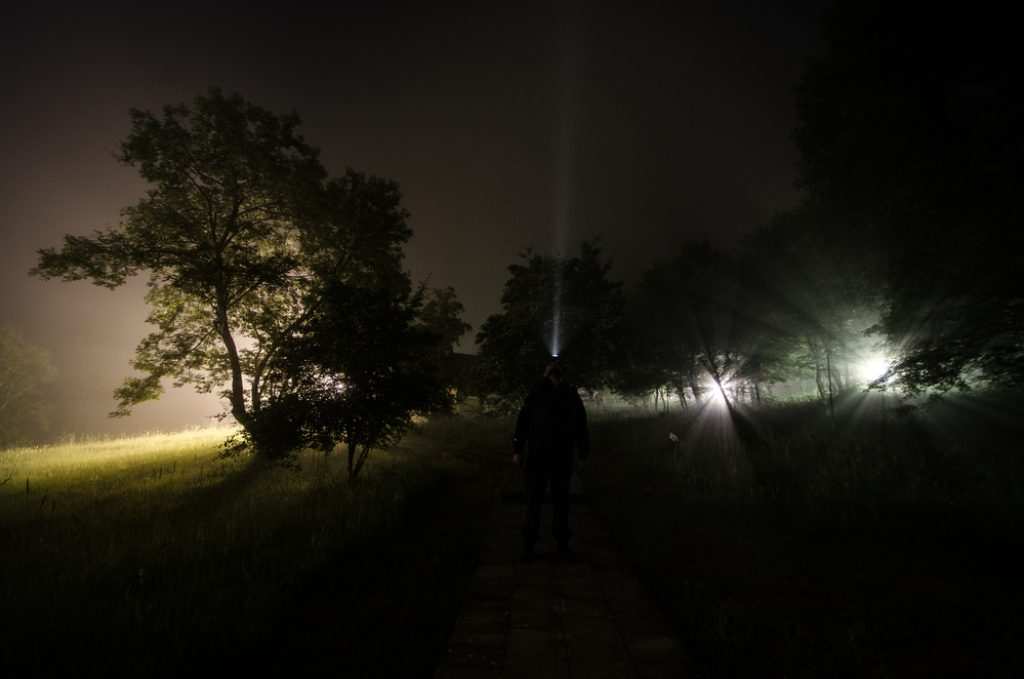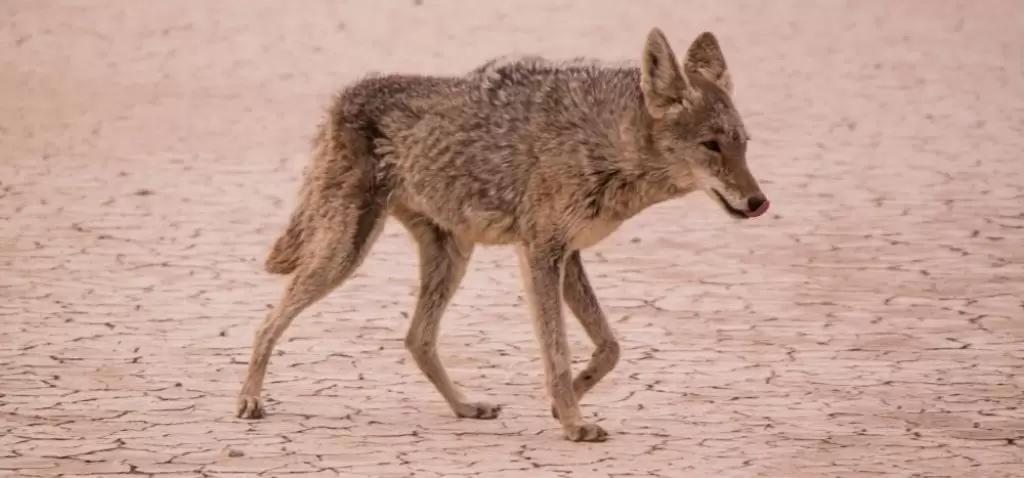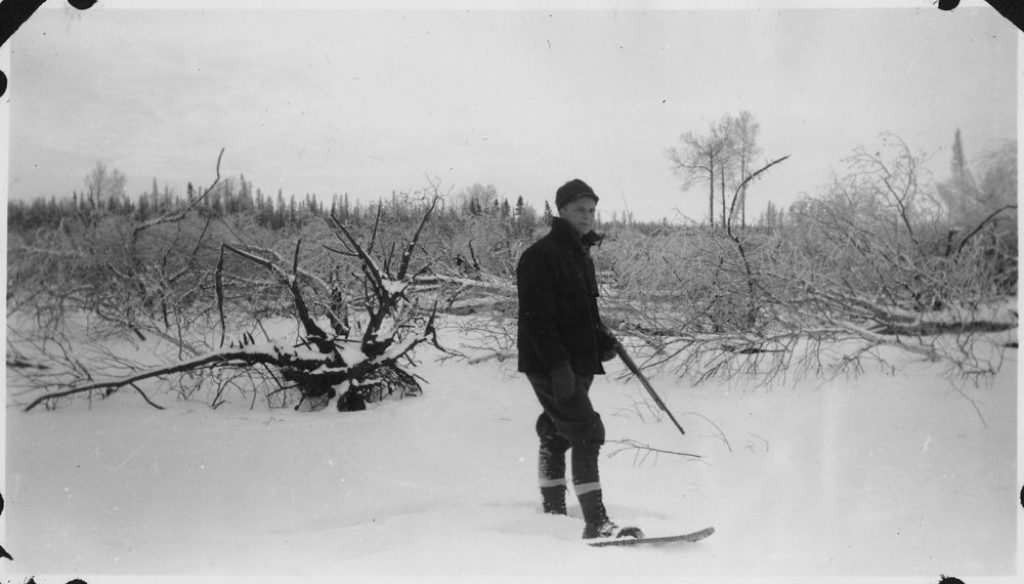We hope you love the products we recommend and just so you know that as an Amazon Associate CoyoteHunting.org may earn from qualifying purchases.
Wondering ‘How do you night hunt for coyotes with lights?‘ There are some great tips that even some seasoned hunters don’t know… are you ready?
In this article, I’ll explore the basics of night hunting for coyotes and and provide some tips and tricks to help you become a more successful hunter.
Understanding the basics of night hunting for coyotes is essential before heading out into the field. One of the most important things to consider is the role of light in coyote hunting.
A good light source is crucial for spotting and tracking coyotes in the dark. Some hunters prefer to use a spotlight, while others prefer to use night vision or thermal scopes. It’s important to choose a light source that suits your needs and budget.
Another key principle in night hunting for coyotes is the role of sound. Coyotes are attracted to sounds, and using a predator call can be an effective way to lure them in.
However, it’s important to use the right call for the area you’re hunting in, as different coyote populations may respond differently to different calls. Additionally, it’s important to avoid over-calling, as this can spook the coyotes and make them less likely to come in.
Key Takeaways
- Understanding the basics of night hunting for coyotes is crucial for success.
- Light and sound are important factors to consider when hunting coyotes at night.
- Patience and persistence are key when hunting unpressured coyotes.
Table of Contents
- What are the Basics of Night Hunting for Coyotes?
- So, How Do You Night Hunt for Coyotes With Lights?
- Key Principles in Night Hunting for Coyotes
- The Role of Sound in Coyote Hunting
- The Importance of Unpressured Coyotes in Hunting
- Other Considerations When Night Hunting Coyotes
- Conclusion
- Frequently Asked Questions
What are the Basics of Night Hunting for Coyotes?
Night hunting for coyotes requires a lot of patience. Coyotes are intelligent and cautious animals, so it may take some time before they respond to your calls or come within shooting range.
Understanding coyote behavior, their habits, and reactions to different stimuli is crucial. This understanding can help predict their movements and increase the chances of a successful hunt.
The proper use of light is a fundamental part of night hunting – so it’s great that you’re already asking the question how do you night hunt for coyotes with lights?. It includes knowing when to use different colors of light, how to position the light, and the importance of keeping the light on the eyes of the coyote.
Effective use of sound is also a key tool in attracting coyotes. This involves knowing how to use different calls, the importance of the mute button, and techniques like lip squeaking.
Hunting unpressured coyotes can increase the chances of success.
These coyotes are less likely to be wary and more likely to respond to calls. Learning from experienced hunters can also be invaluable for beginners. They can provide tips and techniques that they’ve learned through experience.
Mastering these basics can significantly improve hunting skills and increase the success rate of coyote night hunting.
So, How Do You Night Hunt for Coyotes With Lights?
Light plays a crucial role in night hunting for coyotes as it helps hunters spot these animals in the dark.
The reflective shine from their eyes can be caught by the light, alerting the hunter to their presence. However, there are misconceptions about the use of light in coyote hunting that need to be addressed:
The Use of Different Light Colors in Hunting
There is a common misconception that bright light scares away coyotes. However, dim light can be more effective as it doesn’t startle the coyotes while still making them visible. The use of different light colors (white, red, green) can also affect the visibility of coyotes and other animals. Each color has its own advantages and can be used strategically to improve hunting success.
White light is the most common and versatile option, providing good visibility of the area. Red light, on the other hand, has a longer wavelength and is less likely to startle coyotes, making it a better choice for stealthy hunting. Green light is also a good option as it provides good visibility without startling the coyotes.
Keeping the Light On – MAJOR TIP!
One of the key principles in night hunting for coyotes is to keep the light on. Turning off the light can give coyotes an advantage, allowing them to escape or hide. The light not only helps you spot the coyotes but also acts as a shield, preventing them from seeing you.
KEEP THE LIGHT ON! Seriously, this one thing could be the difference between success and failure

Importance of Light Positioning
The positioning of the light in relation to the coyote is also crucial.
The direction and angle of the light can affect the visibility of the coyote and the success of the hunt. Hunters must position the light in such a way that it illuminates the coyote’s eyes and reflects back towards the hunter.
Different light colors can be used strategically to improve hunting success, and keeping the light on is crucial to prevent coyotes from escaping or hiding. The positioning of the light in relation to the coyote is also important to maximize visibility and increase the chances of a successful hunt.
Key Principles in Night Hunting for Coyotes
Night hunting for coyotes requires a different approach than daytime hunting. Hunters must rely on their senses and equipment to locate and track the elusive predators. The following principles are essential for successful night hunting for coyotes.
The Importance of Positioning in Night Hunting
Positioning is crucial in night hunting for coyotes. The hunter must position themselves in a vantage point that provides a clear view of the surrounding area. This allows the hunter to scan the area with their spotlight or other equipment to spot coyotes. The direction and angle of the light can affect the visibility of the coyote and the success of the hunt.
Furthermore, the hunter must position themselves downwind of the coyote to avoid being detected by their sense of smell. The hunter must also position the light in a way that does not startle the coyote but still makes them visible. This requires the hunter to be patient and take their time to find the right position.
Understanding Coyote Behavior
Knowing how coyotes react to light and sound is crucial. This understanding can help hunters use these elements more effectively to attract and spot coyotes. Coyotes are nocturnal animals and are more active at night. They rely on their keen sense of hearing and smell to locate prey.
The Role of Light
Light is essential in spotting coyotes. Using a dim light can be more effective as it doesn’t startle the coyotes while still making them visible. The use of different light colors (white, red, green) can also affect the visibility of coyotes. Keeping the light on at all times is important as turning it off can give coyotes an advantage.
The Role of Sound
Sound is a powerful tool in attracting coyotes. The use of the mute button and lip squeaks can be effective in luring coyotes. Coyotes are curious animals and will investigate sounds that they hear.
Hunting Unpressured Coyotes
Hunting coyotes that have not been exposed to hunting pressure can increase the chances of success. These coyotes are less wary and more likely to respond to calls.
Patience
Patience is a virtue in coyote hunting. Waiting for the right moment to take the shot can increase the chances of a successful hunt. Coyotes are intelligent animals and can quickly detect danger. The hunter must be patient and wait for the right moment to take the shot.
These principles form the foundation of successful coyote night hunting and can greatly increase a hunter’s chances of success when properly applied.
The Role of Sound in Coyote Hunting
Attracting Coyotes: Sound is a critical tool used to attract coyotes when hunting at night. Coyotes are naturally curious and are often drawn towards unusual sounds. Hunters use various calls, including distress calls and howls, to mimic the sounds of prey or other coyotes to lure them in. The use of electronic callers has become increasingly popular due to their effectiveness in mimicking various animal sounds.
Understanding Coyote Behavior
Coyotes are social animals and rely heavily on vocalizations to communicate with each other. Understanding the different sounds that coyotes make can help hunters choose the most effective calls. For example, a distress call might be used to attract a coyote looking for an easy meal, while a territorial call might lure in a coyote looking to defend its territory.
Using the Mute Button
The mute button on electronic calls is a valuable tool for hunters. It allows the hunter to abruptly stop the call, which can pique the curiosity of the coyote and draw it closer. This technique can be particularly useful when a coyote is hesitant to come closer or is circling around the hunter’s position.
Lip Squeaking
Lip squeaking is a technique used to make a quiet, high-pitched sound that can attract coyotes that are close by. It’s particularly useful when the coyote is already within sight but needs some additional coaxing to come within shooting range. To lip squeak, the hunter should form an “O” shape with their lips and suck in air while making a high-pitched sound.
Sound Volume
The volume of the call is also important when hunting coyotes at night. Starting with a lower volume can help attract coyotes that are closer without scaring them off. The volume can then be gradually increased to reach coyotes that are further away. It’s important to note that too much sound too soon can often spook coyotes. Predators lose some of their usual caution at night, but they can still be easily scared off.
Overall, understanding coyote behavior and using sound effectively can greatly increase the chances of a successful coyote hunt at night.
The Importance of Unpressured Coyotes in Hunting
How to use Patience when Night Coyote Hunting
Patience is key when hunting coyotes at night. Coyotes are intelligent animals and can quickly become wary of human activity in their territory. To successfully hunt coyotes at night, it is important to find areas where they are unpressured and feel comfortable.
An “unpressured coyote” refers to a coyote that has had minimal to no contact or interaction with humans. These coyotes are not accustomed to human presence, sounds, or hunting techniques, making them less wary and more likely to respond to calls or lures.
In contrast, coyotes that have been exposed to hunting pressure are more likely to be cautious and harder to lure or hunt. They may have learned to associate certain sounds, lights, or behaviors with danger and therefore are more likely to avoid these stimuli.
Hunting unpressured coyotes can often be more successful because these animals have not yet learned to evade hunters. This is why many hunters seek out remote or less frequented areas where coyotes are less likely to have encountered humans.
One way to find unpressured coyotes is to scout for areas that have abundant prey and food sources. Coyotes are opportunistic feeders and will often frequent areas where they can easily find food. Look for areas with an abundance of rabbits, rodents, and other small game.
Once you have located an area with abundant prey, it is important to use patience when setting up your hunting spot. Coyotes are nocturnal animals and are most active at night. They may take some time to come out of hiding and begin hunting for prey.
When setting up your hunting spot, make sure you are downwind of the coyotes’ location. Coyotes have a keen sense of smell and can easily detect human scent. It is also important to be as quiet as possible when setting up your hunting spot. Coyotes have excellent hearing and can detect even the slightest noise.
Once you have set up your hunting spot, it is important to remain patient and wait for the coyotes to come out of hiding. This can take some time, but the payoff can be worth it. Unpressured coyotes are more likely to respond to calls and decoys, making them easier to hunt.
In conclusion, finding unpressured coyotes is essential to successful night coyote hunting. Using patience when scouting and setting up your hunting spot can increase your chances of successfully hunting coyotes. Remember to be downwind and quiet when setting up your hunting spot and to remain patient while waiting for the coyotes to come out of hiding.
Other Considerations When Night Hunting Coyotes
Night hunting for coyotes can be a thrilling and rewarding experience, but it also comes with its own set of challenges and safety concerns. Here are some other factors to consider when planning a night hunt for coyotes:
Safety Measures
Hunting at night can be dangerous, so it’s important to take the necessary safety precautions. One of the most important things to do is to wear reflective clothing to make yourself visible to other hunters. It’s also a good idea to carry a GPS device and to let someone know where you’re going and when you plan to return.
Legal Considerations
Before embarking on a night hunt for coyotes, it’s important to check local laws and regulations. Some areas may require a permit or have restrictions on the types of weapons or ammunition that can be used. It’s important to follow these regulations to avoid legal trouble.
Equipment Check
In addition to a hunting light and sound calls, there are other essential pieces of equipment that are necessary for night hunting. These include appropriate firearms, scopes suitable for low light conditions, comfortable and warm clothing, and binoculars. It’s important to check all equipment thoroughly before heading out to ensure that everything is in good working order.
Scouting
Scouting the area during daylight hours can help familiarize hunters with the terrain and potential coyote hotspots. This can help improve the chances of a successful hunt.
Coyote Habits
Understanding coyote behavior can be crucial to a successful hunt. This includes their feeding habits, mating seasons, and territorial nature. Knowing these habits can help hunters choose the right calls and tactics to lure in coyotes.
Field Dressing and Handling of Game
After a successful hunt, it’s important to know how to properly handle and process the coyote. This includes tips on field dressing, skinning, and safe handling practices to prevent the spread of diseases.
Ethical Hunting Practices
Promoting ethical hunting practices is important to ensure the sustainability of the sport. This includes only taking clear shots, respecting private property, and not taking more game than needed. By following these practices, hunters can help preserve the sport for future generations.
Conclusion
Nighttime coyote hunting can be an exhilarating and rewarding experience for hunting enthusiasts. To ensure a successful and safe hunting experience, it is important to have proper knowledge, techniques, and gear. Understanding the nature and behavior of coyotes, as well as their habits at night, is crucial for tracking and hunting them effectively.
When hunting coyotes at night, hunters can use different tools such as spotlights, thermal scopes, or night vision scopes. They should know their shooting distance in the field because the darkness makes estimation tough. Keeping the wind to their face and identifying where coyotes are most likely to approach from can also increase the chances of success.
Hunting coyotes at night using calls is one of the most popular and effective methods. Various callers can be used to locate and lure the coyotes in for a clean shot. It is essential to use calls that mimic the sound of a prey animal in distress to attract coyotes.
Hunters should also wear camouflage when hunting coyotes at night. Coyotes are savvy predators who depend on their sense of smell, keen eyesight, and an uncanny ability to be alerted to anything out of the ordinary in their surrounding area. Camouflage can help hunters blend in with their surroundings and avoid detection.
In summary, hunting coyotes at night requires knowledge, skill, and the right gear. Hunters should understand the behavior of coyotes and use the right tools and techniques to increase their chances of success. By following these tips, hunters can have a safe and enjoyable experience while hunting coyotes at night.
Frequently Asked Questions
How do you hunt coyotes at night by yourself?
Hunting coyotes at night by yourself requires careful preparation and a strategic approach. First, you need to scout your hunting area during the day to identify potential coyote habitats and travel routes. Use a quality light with adjustable color settings for optimal visibility. Position yourself downwind of the coyote’s expected location to avoid detection. Use a combination of distress calls and coyote vocalizations to attract the animals. Remember, patience is key when hunting coyotes at night.
What gear do you need to hunt coyotes at night?
The essential gear for night coyote hunting includes a reliable firearm or crossbow, a good-quality hunting light with different color settings, and a variety of calls. You’ll also need camouflage clothing to blend into your surroundings, and a comfortable, quiet seat or stand. Additional useful equipment might include binoculars for spotting coyotes at a distance, a rangefinder for accurate shot placement, and scent control products to mask your human odor.
What is the fastest way to attract coyotes?
The fastest way to attract coyotes is by using calls. These can be either electronic or mouth calls that mimic the sounds of prey animals in distress, or the vocalizations of coyotes themselves. It’s important to vary the sounds and volume of your calls to make them sound as natural as possible. Additionally, using scent lures or bait can also help attract coyotes to your location.
What time of night is best for coyotes?
Coyotes are most active during the twilight hours of dawn and dusk. However, they can also be active throughout the night, especially in areas with less human activity. The best time for night hunting can vary depending on the specific habits of the coyotes in your area. It’s a good idea to spend some time observing the coyotes’ behavior and patterns before deciding on the best time to hunt.
Is it legal to hunt coyotes at night?
The legality of hunting coyotes at night varies by state and country. In some places, it is legal to hunt coyotes at night with certain restrictions, while in others, it is completely prohibited. It is essential to check the local laws and regulations before hunting coyotes at night.
How far can coyotes see at night?
Coyotes have excellent night vision and can see up to 1,000 yards in complete darkness. However, their vision is not as sharp as humans during the day. They rely on their sense of smell and hearing more than their vision.
Can you hunt coyotes at night in Tennessee?
Yes, it is legal to hunt coyotes at night in Tennessee. However, there are specific regulations and restrictions that hunters must follow. For instance, hunters must have a valid hunting license and a permit to hunt coyotes at night.
What time of night are coyotes most active?
Coyotes are nocturnal animals, which means they are most active at night. They are particularly active during the hours of dawn and dusk, but they can be active throughout the night.
Hunting coyotes with night vision scope?
Using a night vision scope can be an effective way to hunt coyotes at night. It allows hunters to see in complete darkness and gives them an advantage over the coyotes. However, it is essential to check local laws and regulations before using night vision scopes for hunting.
What is the fastest way to attract coyotes?
Using coyote calls or distress calls can be an effective way to attract coyotes quickly. Coyote calls imitate the sounds of coyotes, while distress calls imitate the sounds of prey in distress. However, it is important to note that using calls may not always be successful, and hunters should always exercise caution when using them.



